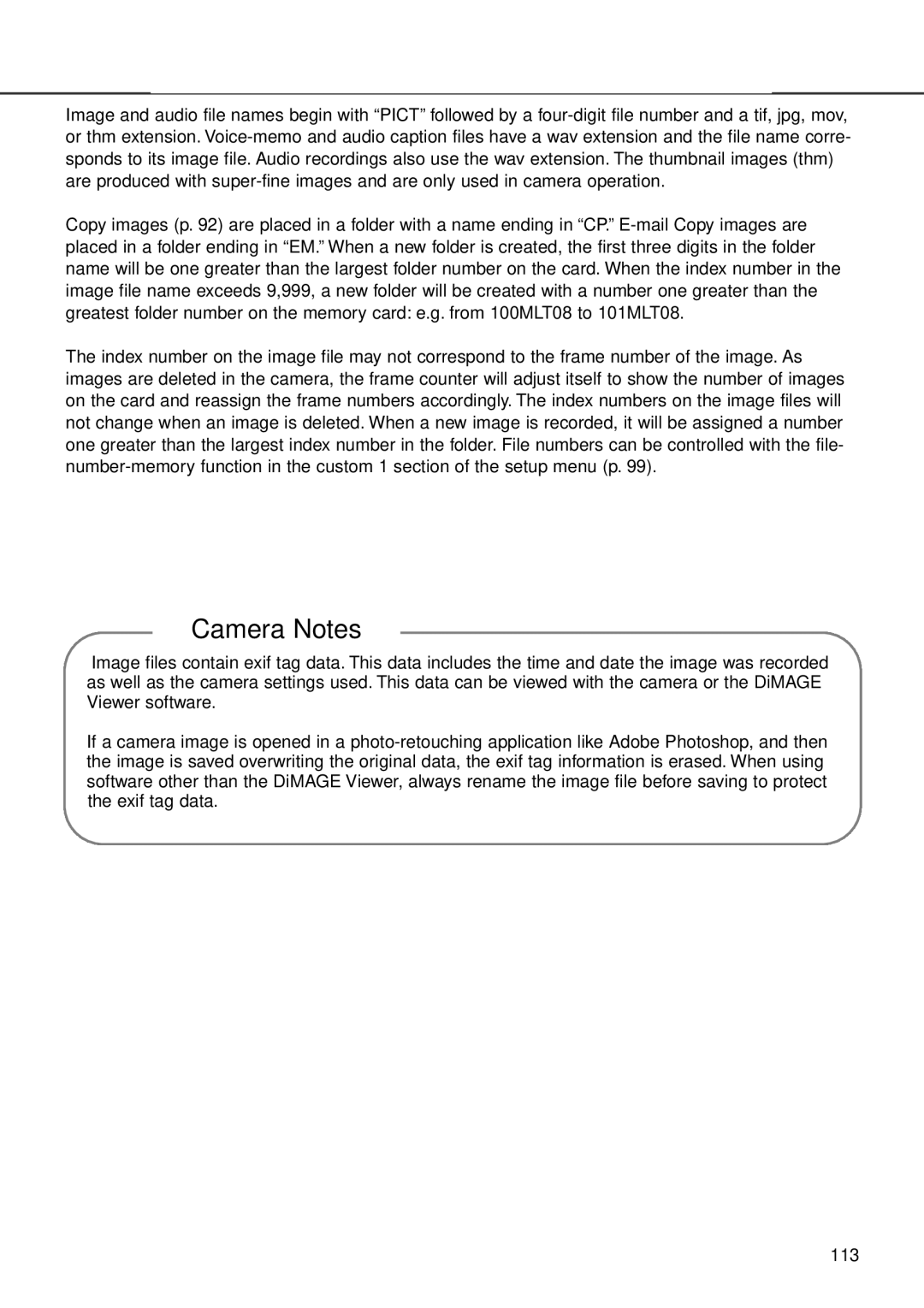
Image and audio file names begin with “PICT” followed by a four-digit file number and a tif, jpg, mov, or thm extension. Voice-memo and audio caption files have a wav extension and the file name corre- sponds to its image file. Audio recordings also use the wav extension. The thumbnail images (thm) are produced with super-fine images and are only used in camera operation.
Copy images (p. 92) are placed in a folder with a name ending in “CP.” E-mail Copy images are placed in a folder ending in “EM.” When a new folder is created, the first three digits in the folder name will be one greater than the largest folder number on the card. When the index number in the image file name exceeds 9,999, a new folder will be created with a number one greater than the greatest folder number on the memory card: e.g. from 100MLT08 to 101MLT08.
The index number on the image file may not correspond to the frame number of the image. As images are deleted in the camera, the frame counter will adjust itself to show the number of images on the card and reassign the frame numbers accordingly. The index numbers on the image files will not change when an image is deleted. When a new image is recorded, it will be assigned a number one greater than the largest index number in the folder. File numbers can be controlled with the file- number-memory function in the custom 1 section of the setup menu (p. 99).
Camera Notes
Image files contain exif tag data. This data includes the time and date the image was recorded as well as the camera settings used. This data can be viewed with the camera or the DiMAGE Viewer software.
If a camera image is opened in a photo-retouching application like Adobe Photoshop, and then the image is saved overwriting the original data, the exif tag information is erased. When using software other than the DiMAGE Viewer, always rename the image file before saving to protect the exif tag data.

